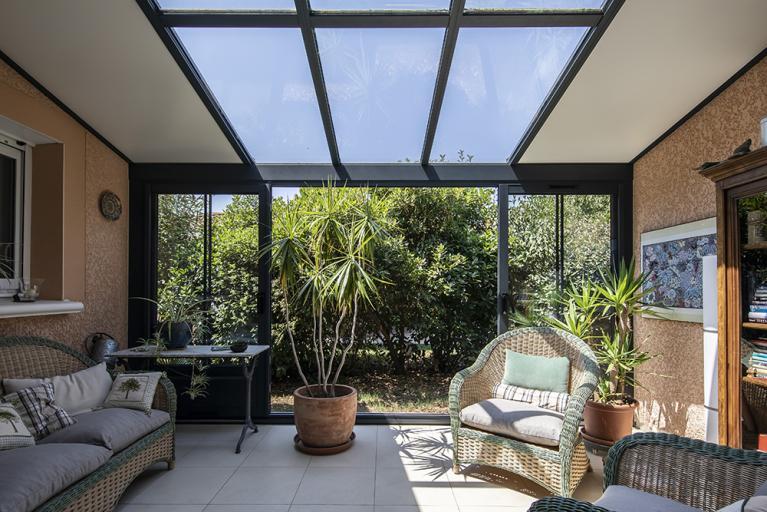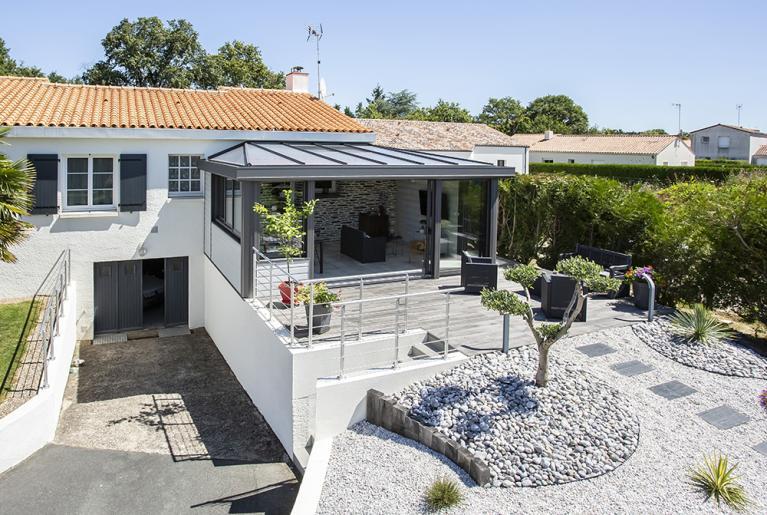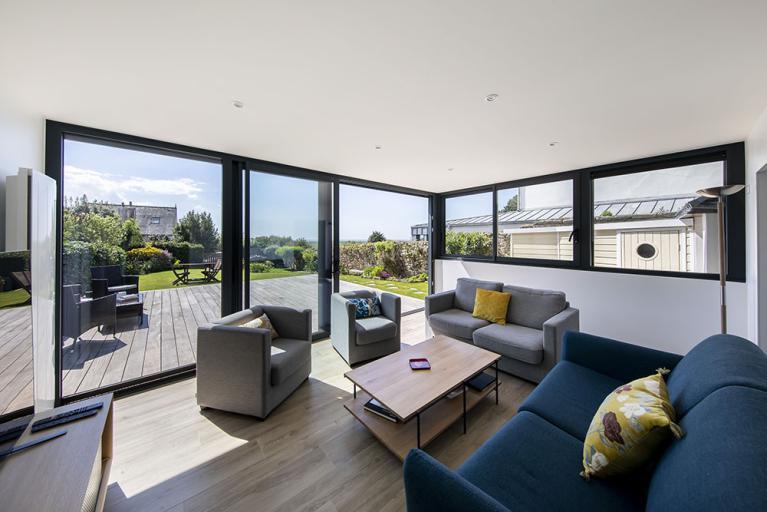Choosing your conservatory means making choices about every aspect of the construction. Of course, you need to choose the type of conservatory you want, but you also need to decide on the materials and equipment you want to use. To make these choices, you need to take into account the steps to be taken and your budget. But you also need to indulge yourself and make aesthetic choices. AKENA can help.
How to choose your conservatory?
Our latest articles - 11 results
How do you choose the right conservatory?
The benefits of a conservatory
A conservatory offers many advantages. It expands your living space, brings more natural light into your home and creates a harmonious link between your home and garden. What's more, a well-designed conservatory can increase the value of your property. It is also a versatile space that can be used as a living room, dining room, office or even a winter garden.
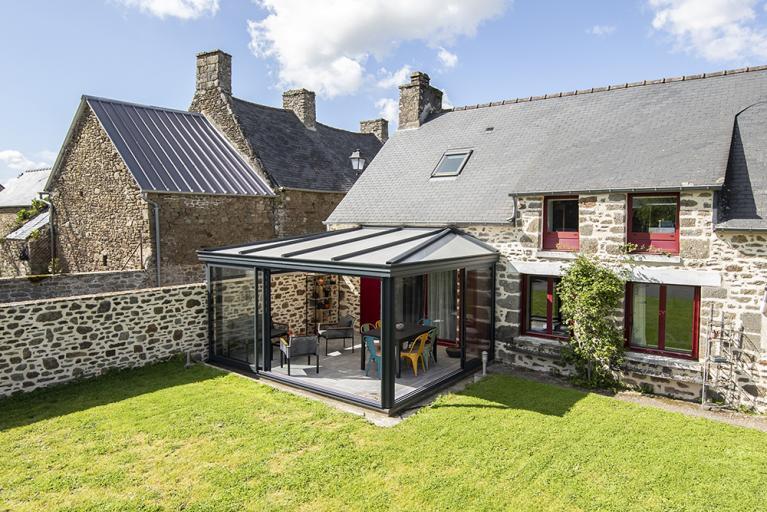
Criteria for choosing a conservatory
Choosing the material for your conservatory
Older conservatories were often made of wood or even wrought iron. PVC then replaced them. Today, aluminium is the main material used for the vast majority of conservatories. Aluminium is an advantageous material for its strength, ease of maintenance and thermal qualities.
Take the time to study the different conservatory materials and select the one that best suits your project, both in terms of appearance and budget. Don't forget that the maintenance of your conservatory plays a part in its lifespan. And a well-insulated conservatory, using the right materials, is the very least you can expect from your extension these days.
How to choose the right roof for your conservatory
The choice of roof is crucial to the comfort and aesthetics of your conservatory. You can opt for a glass roof to maximise natural light, or opaque panels for better thermal insulation. You can also combine the two to get the benefits of each option. You should also consider the pitch of the roof, which should be adapted to the architecture of your home and the climatic conditions of your region.
The importance of thermal insulation
Good thermal insulation is essential if you are to enjoy your conservatory all year round. It helps maintain a pleasant temperature inside, whatever the season, and reduces heating and air-conditioning costs. For optimum insulation, choose quality materials and make sure that the joints and glazing are properly fitted. Don't hesitate to ask our experts for advice on the best insulation solutions for your conservatory.
Budget for your conservatory
The price of a conservatory will depend on a number of factors: its surface area, obviously, but also the materials and equipment used to build it. You should expect to pay at least several thousand euros, even for a simple 5 m² conservatory.
However, it's sometimes better to increase the budget slightly in order to have a better insulated room: this option will reduce your heating bill while making the room accessible all year round.
Don't hesitate to compare solutions so that the bill matches your real needs.
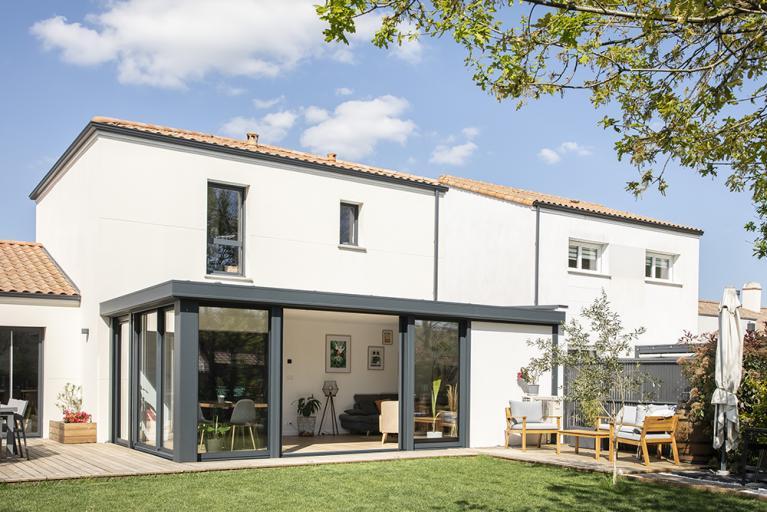
Equipment to choose for your conservatory
The equipment you choose can affect the price of a conservatory. But also on its comfort. Today's conservatories are increasingly equipped to meet a wide range of needs.
Some of the most common are shutters, which are used both to control light and to insulate the room from the outside world. Lighting has also become an essential piece of equipment. You'll also need to consider the type of heating, so that you can enjoy an extra room whatever the season. Once you've taken all these factors into account, your conservatory project will be one step closer to becoming a reality, and you'll know exactly what type of conservatory to choose.
The conservatory construction project
The stages in building a conservatory
There are several stages to build a conservatory. First of all, it's essential to define your needs and draw up a detailed plan of your project. This involves taking into account the size of the conservatory, its location, orientation and use (living room, dining room, office, etc.). Then you need to choose the materials and equipment, and obtain the necessary permits. This may involve contacting your local council to find out whether your project requires planning permission or a simple preliminary works declaration.
Once these formalities have been completed, the work can begin: preparing the site, laying the foundations, erecting the structure and installing the glazing and fittings. It is important to comply with current standards, particularly in terms of thermal insulation and safety. Finally, the finishing touches are put in place to ensure that your new room looks as good as it feels. This may include painting, laying floor coverings or installing blinds or shutters.
It's also important to allow for a period of testing and adjustment after the conservatory has been installed. This may include checking thermal performance, adjusting shutters or blinds, or adjusting lighting. Don't forget that the success of your conservatory project depends not only on the quality of the construction, but also on your satisfaction as a user.
The work needed to install a conservatory
The work required to install a conservatory varies according to the complexity of the project. It may include earthworks, laying foundations, installing the structure and glazing, and fitting equipment (lighting, heating, shutters, etc.).
Earthworks are used to prepare the ground for the conservatory. This may include clearing the ground, levelling and creating a stable surface for the foundations. The foundations are essential for the conservatory's stability. They can be made of concrete or other materials, depending on the ground conditions and the size of the conservatory.
Assembling the structure and fitting the glazing are delicate stages that require great precision. It's important to use qualified professionals to guarantee the quality and durability of your conservatory. At AKENA, we work with you every step of the way to ensure a successful installation.
Focus on aluminium conservatories
An aluminium conservatory has many advantages. Aluminium is a light, strong and durable material that requires very little maintenance. It also offers great design freedom, allowing you to create modern, elegant structures. What's more, aluminium is an excellent thermal insulator, ensuring optimum comfort inside your conservatory, whatever the season. Finally, aluminium is a recyclable material, making it an environmentally-friendly choice.
Aluminium has the advantage of being both strong and light. This makes it much easier to handle when installing the conservatory. What's more, aluminium is weatherproof and corrosion-resistant, so your conservatory will last a long time.
Aluminium gives you a great deal of freedom in terms of design. Thanks to its flexibility, conservatories can be created in a variety of shapes, from the most classic to the boldest. What's more, aluminium can be painted in an infinite number of colours, allowing you to adapt your conservatory to the aesthetics of your home and garden.
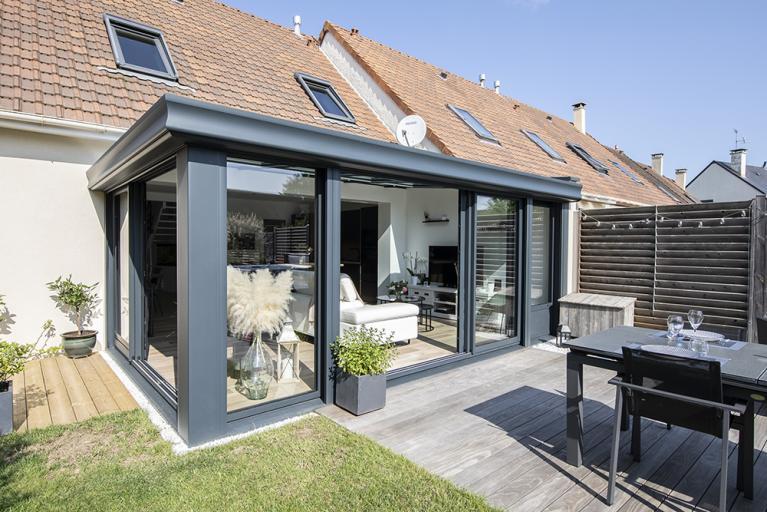
You have a project?
Would you like a personalised 3D study and a free quotation? Contact us by clicking below.
AKENA is...
Over 40 years of experience
Founded in 1981 by one man, we now have more than 500 employees dedicated to making your project a success.
Made in France
A historic site and two factories covering more than 25,000 m² in Dompierre-sur-Yon in the Vendée region (85)
Innovative and tailor-made products
At AKENA, we are brimming with new ideas to improve and enhance our products.
The European leader in conservatories, pergolas...
But not only! AKENA also offers a complete range of carports and pool houses.
